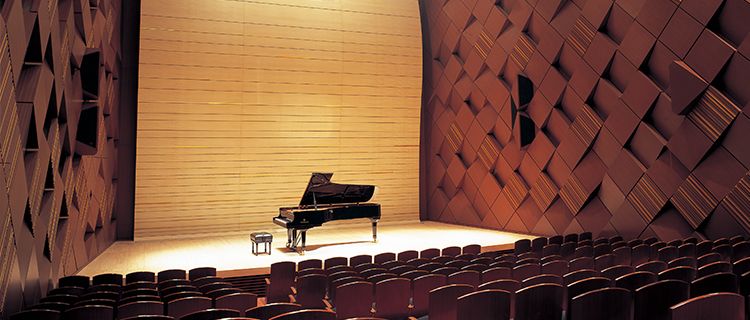THE ROOM

When we talk about the ‘quality’ of audio systems, we often have the loudspeakers in mind. In that case, only after we have discussed the loudspeakers do we usually start to discuss power amplifiers, microphones, microphone pre-amplifiers, digital signal processing hardware and hardware… all components that involve moving electrons.
We often overlook a major component in the audio chain from the sound source to our ears: the room. Of course when we enjoy an open air concert or listen through headphones there’s no room involved, but the majority of sound experiences actually happen in a room - ranging from small ones like a domestic living room to very large ones to accommodate an orchestra and audience… which is then called a concert hall.
In the human hearing process, the notion of ‘the room’ is very important. In fact, a large part of the human auditory system is dedicated to detecting room signatures by analysing reflections. The reason for this may be that, in primitive ages, humans started to live in caves and later self-constructed rooms - or multiple rooms constituting houses - to shelter from the forces of nature such as rain, wind, animals with hostile intentions and, sadly, sometimes other humans. Besides shelter, a room also introduces acoustic reflections from its walls and ceiling, and the human brain started to correlate these with a state of being sheltered, safe from harm. Therefore a room’s acoustics generate a feeling of envelopment, of being surrounded by walls and a ceiling and, therefore, of being ‘safe’. Additionally, because rooms are often shared between humans, a feeling of ‘togetherness’ may also be imparted.
Another explanation could be more simple: music just sounds better with some room reflections, because they make it easier for the performer to play, thanks to the acoustic feedback, or because the reverberation nicely ‘glues’ the notes together. Whatever the theory; in general, one could state that human beings feel comfortable listening listen to music and even speech in a room with a certain acoustic response, and less comfortable listening in an anechoic (or, as many people would refer to it, ‘dead’) environment.
When we apply a sound reinforcement system in an anechoic chamber, then the only thing that the listener hears is the loudspeaker’s output. However, in reality this never happens - not even with an open-air concert, where there’s always acoustic reflection from the ground and various site structures. Loudspeakers are usually used in a room and a listener will always hear the room’s unique response. Depending on the geometry, diffusion and absorption of the floor, wall and ceiling materials, the timing of reflections (i.e. reverberation) and volume levels will differ between frequencies, causing every room to possess a unique acoustic ‘fingerprint’, which changes the dry source signal - whether it’s a natural sound source or a loudspeaker.
This introduces the room as an additional factor in the system’s component list. Where often the loudspeaker is considered the most significant component in an audio system, one could argue that in any room with a substantial acoustic energy (‘G’, or field strength) and reverberation time (RT), the room may be just as significant.
As a result, the conclusion must be that comparing loudspeakers systems by listening to them in different rooms or halls may give an invalid assessment. The only way to assess the quality of sound systems, including their loudspeakers, is to place them in the same room. In perspective, discussing the quality of audio systems by comparing listening experiences in different rooms or halls ignores the ‘room’ component in the audio signal chain and, as a result, may not make complete sense.






